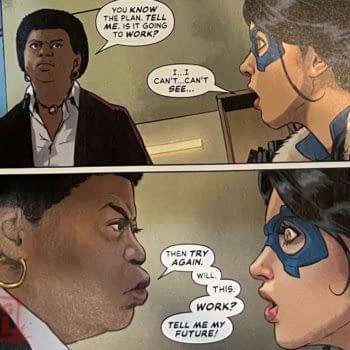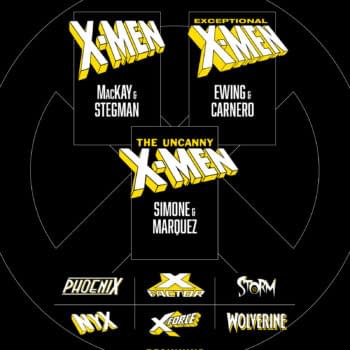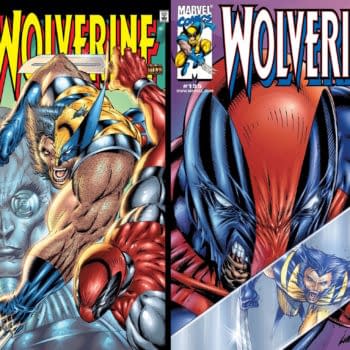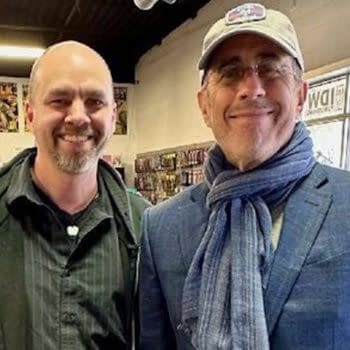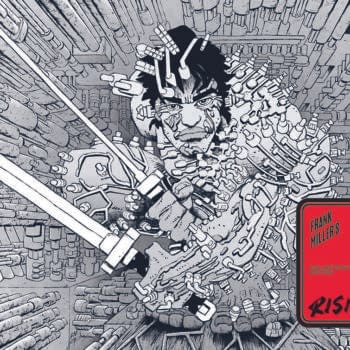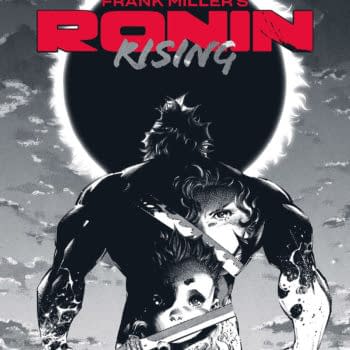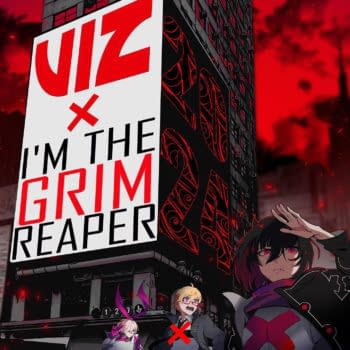Posted in: Comics | Tagged:
Breaking Into Comics With Chris Claremont, Jimmy Palmiotti, And Kevin Eastman

A star-studded ensemble of comic creators got together at Planet Comicon for an insightful and entertaining panel titled First Job in Comics: Breaking In. Chris Claremont, Jimmy Palmiotti, Kevin Eastman and more all shared their professional origin stories.
The extraordinary Chris Claremont began by recalling his days at Bard College in 1969. The school required undergraduates to get a job or internship in their field for a credit. At the time, Claremont was studying to become a political theorist. The political calamities of the 1960s were reaching their apex, as Claremont noted that the political environment of the time was not hospitable for someone like himself who wanted to "balance the budgets and end the war."
He had a strong interest in writing and decided to pursue this avenue instead. His parents knew famed Mad Magazine cartoonist Al Jafee, who had spent time working with Stan Lee for Timely Comics. Using this connection, Claremont was able to score a gig as an intern for Marvel. Stan Lee broke the news to Claremont via phone: "Hey there true believer, this is Stan Lee!" Lee explained they couldn't afford to pay him, but Claremont was happy with the college credit.
His two months as a Marvel intern were one of the best times in Claremont's life up to that point. As was customary for Marvel at the time, whenever interns were leaving their position, they were asked to reply to a stack of unanswered fan mail. Among Claremont's letters was a submission from Tony Isabella.
"I wrote a very polite thanks but no thanks, subtext really not very good. The punchline, of course, is four and a half years later when I worked at Marvel for real you'll never guess who my boss was. And you'll never guess who never let me forget who had dumped his first submission to Marvel. That's the what goes around comes around history of Marvel. That's how it all began, blame it on Stan."
Jimmy Palmiotti attended the High School of Art Design in NY with hopes of becoming a comic book artist. During the 10th grade, one of his teachers introduced him to Marvel inker Chick Stone, who needed help meeting his deadlines. Palmiotti met with Stone, who offered him $5 to ink a Frank Robbins breakdown page from Inhumans #41. Palmiotti had never inked before, but he agreed to step up to the plate.
Stone told Palmiotti that the first panel was a train yard (despite looking like a bunch of boxes), and informed him that it was imperative he do a good job on the trains. For the sake of reference, Palmiotti went to a train yard on Coney Island. He climbed the fence to get a good view and inked the page. Palmiotti was very proud of his work. Upon turning in the completed page, Stone flat-out told Palmiotti, "This is terrible." But he still gave him the $5 and wished him luck for the future.
The next year, Palmiotti's teachers sent him to a group of artists working on a giant-size newspaper series called Rock 'N' Roll Comics. Palmiotti met with the artists, who were living in a tiny New York apartment that Palmiotti describes as being the size of the panel desk. When Palmiotti asked the artists where they slept, they responded, "You see the walls? They're mattresses standing up. We just drop the mattresses — one, two, three — and that's where we sleep. Until then, we put them back up."
Reference material was taped to the bottom of the mattresses, and as they were moved, papers went flying everywhere. Palmiotti thought to himself, "Comic people make no money." He entered the field of advertising and eventually went on to own one-third of the company he worked for. At the age of 30, he sold his part of the company.
Then, he found out his old high school friend Mark Teixeria needed help completing some artwork he was doing for Marvel. Palmiotti agreed to help, as long as he could do the work in the Marvel bullpen. Palmiotti was able to mingle with other Marvel workers, cementing his own job in the process. Palmiotti was informed that his background inking was really helping save the books. Palmiotti asked for a credit, and received his first-ever background inking credit in Ghost Rider #6.
Kevin Eastman humbly stated that dumb luck was the main thing that led to his career as a professional creator. As a lifelong comic fan, Eastman idolized Jack Kirby. He remembers the day he told his parents that he wanted to be Kirby. "They had this mortified look, like, 'Oh my god, this guy is never going to move out of the basement.'"
Early on, he sent samples anywhere and everywhere, which resulted in stacks of rejection letters. Just as he was ready to give up, he discovered Heavy Metal Magazine in 1977. He still can't believe the newsstand sold it to him, because it contained nudity. Heavy Metal made Eastman realize you could do any story of any genre for any age in comic format. This led to his discovery of many international talents and underground publications. He realized he wanted to make comics even if it meant he had to live in his parents' basement forever.
Eastman was trying to pitch some short stories to a magazine that was changing their focus to advertising. They told him, "You do weird shit like this guy Peter Laird does — you should meet him." Eastman sent Laird a letter, and the two bonded immediately. They decided to work together to self-fund and publish a book that they would want to read: "Nobody is going to buy this stupid comic anyways, so let's write something for ourselves."
Using their tax returns and a loan from Eastman's uncle, they printed their books and put an ad in the Comic Buyers Guide. They never expected the massive success of TMNT, so they were using copies of the first issue as coffee tables.
"Then it got weird, because you guys started buying this comic book. I think most people when they picked it up thought what the hell is this? Whether they loved it or they hated it they still picked it up."
Laird called Eastman excitedly proclaiming, "If we make six of these a year, we can make $2,000 each pre-tax, we can eat all the macaroni and cheese we want, pay our rent, and draw comic books for a living." Eastman said that the longest story they did before the first issue of TMNT was only eight pages.
"I knew nothing. I still don't know anything…the only reason I'm sitting up here is because so many of you guys out there have been following these turtles for 34 blankity blank years. I have the best job in the world and am eternally grateful. I fell into it and it's your fault."
All of the creators were happy to share their humble beginnings to a panel room full of fans hanging on their every word. The main takeaway I gathered from all of these artists is that breaking into comics requires more than just talent and passion. You need to be willing to go through periods of poverty, display grueling levels of perseverance, and hope for moments of lucky happenstance.






